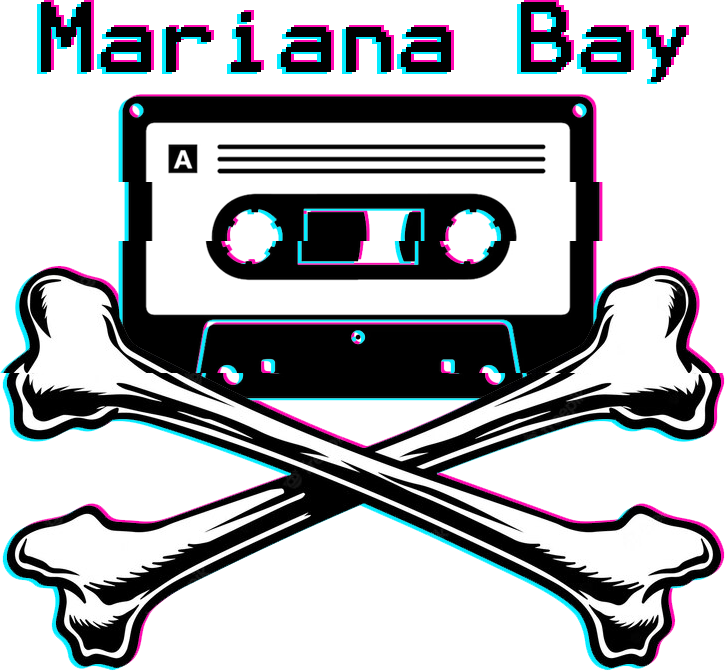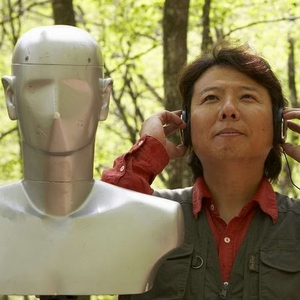Small introduction
Japanese ambient music is a gerne that has only recently reached the general public. Thanks to the various blessings of YouTube algorithms and fans spreading the word. Music that was destined to become a "lost media" is enjoying its renaissance. Raise in popularity of certain composers that can be compared to an explosion in popularity that Masayoshi Takanaka or group Casiopea is enjoying. In this small series want to focus of couple of more popular Japanese composers of ambient music. I will make sure to leave couple bread crumbs for people that crave the yet unexplored and still fairly nishe.
I know I promised something of a mega thread with various artists, but this single post took 2 evenings to write. So please take it as it is.
Also a disclaimer. I wasn’t able to brought up every single piece of music created my Mr. Kokubo. Please check his discography on discogs
First on the list is Takashi Kokubo. Easily the most recognizable name in the field of ambient music. I’m calling him “Takanaka’s relative” due to the fact that many people discover Mr. Kokubo music after they get their recommendations filled with albums from Mr. Takanaka. Or Mr. Kokubo albums start to show up alongside Mr. Takanaka’s albums. In those early discovery days.
Now to a bit of Mr. Kokubo’s biography, since this stuff is obscure af and not really available in English.
Where it all began
Born in 1956 in Tokyo. In late 70’s Mr. Kokubo has been practicing his skills of using synth and creating music alongside Ryuichi Sakamoto and later in “Mandrake” group. This group was focused on creating experimental electronic music. His first credited work can be found in 1978 where he works with The Bach Revolution to create album “Synthesizer study”. This album was made to aid learning how to use Yamaha CS-10 synthesizer
The Bach Revolution/Mandrake - STAR WARS
The Bach Revolution / Mandrake - Machine Gun
This whole album is mostly made of covers of already existing songs, and this trait remains in Mr. Kokubo’s early carrier. Year later he collaborates with group “Shingetsu” to create album "New Moon”. Kokubo’s work in this album was mostly focused on bringing synthesizers together with guitar and drums.
Shingetsu - New Moon full album
First (finally) album by Mr. Kokubo surfaced in 1980. Released together with Kazutaka Tazaki “Digital Bach” till this day is an absolutely based display of turning classical piano pieces made by “Johann Sebastian Bach” to digital tunes. NGL I would be rather upset if this piece was lost to the passage of time. Fortunately it’s here for everyone to listen to:
Kazutaka Tazaki & Takashi Kokubo - Digital Bach full album
Small fast forward, as time between 1983 – 1986 contain mostly cooperations with Nobuyoshi Koshibe and composition of synthesizer covers of music from anime / shows. I will keep it brief. As those years are a time in which Mr. Kokubo polishes his skills with synthesizer. Look for “Synthesizer fantasy” on youtube. There are plenty of albums from Mr. Kokubo as well other artists that took on this trope.
Honorable mention to album that covers tracks from Zeta gundam
Second Honorable mention comes to album “Digital Soundology #1 Volk Von Bauhaus” which Mr. Kokubo released in 1985 as his fully independent project: Takashi Kokubo - Digital Soundology #1 Volk Von Bauhaus full album
Still only using synthesizers, but his style already formed and clearly audible
We’re getting to the ambient, I promise
The year is 1987 when Takashi Kokubo is hired by Sanyo to create an album to promote Sanyo’s new line of high end air-conditioners.
Get at the wave is his first album composed with use of cyber phonic. A 3D microphone that captures sounds from all directions. Something like those asmr microphones that are shaped like ears.
Anyway. First ambient album and right of the bat Mr. Kokubo is carefully utilizing sounds of nature together with slooooow synth and flute that almost sounds like it’s unsure if it’s in correct place.
To me. For a first album in the gerne it’s absolutely stunning.
Takashi Kokubo - Get at the wave full album
This album will get a rerelease in 2018. Titled A dream sails out to sea
Dry spell of 1987-1990 ?
Not at all.
in 1987 Mr. Kokubo earned an award for “the best video” at the International Music & Video Grand Prix for 6 minute long animation “Image feedback”. Released back in 1985. He created music for it.
in 1988 Mr Kokubo earned a Grand Prize for Excellence in Environmental Art Award with his Environmental plan "IMAGINADE".
Year 1990 sees his return to ambient albums. With release of album “Gaia” Mr Kokubo has the creative freedom to create ambient that blends gentle sounds of nature with even calmer synths. This is a first glimpse of his style from what I consider his golden age of ambient. But about that in a moment
Takashi Kokubo - Gaia full album
Between us and the “ION series” still lays one more album.
“Yuragi”. His final exam. Album in which Mr Kokubo embraces the slow entrances and endings that linger for minutes. Mixing nature and human made sounds for lovely 27 minutes
Takashi Kokubo - Yuragi full album
ION series – Kokubo's golden age
The golden age of Takashi Kokubo’s music comes in 1992, with releases of 10 ambient albums. All released by “studio ION”. Created by Mr. Kokubo for his great ambient venture.Allow me to gloss over this part. As praising each album will make us sit here till tomorrow evening. I want to highlight his most popular album from this series “Oasis of the wind II. A story of forest and water”.
Takashi Kokubo - Oasis of the wind II. A story of forest and water full album
If you listen carefully you might notice that first track is just a copy from his “Yuragi” album. It might be a bit jarring for us. As our trip though his work is rather compressed. But I can imagine how good it was to hear it again after 3 years from the release of “Yuragi”
Second album worth praise is “Tokyo ~ Noise aesthetic”. In which Mr. Kokubo captures the urban sounds of an everyday life in Tokyo. From busy public transport at the morning. To soothing sounds of the evening silence. Periodically invaded by lingering sounds of civilization.
Takashi Kokubo - Tokyo ~ Noise aesthetic full album
Years 1992 – 1993 are not only time for ambient. It’s also time to put his cyber phonic to use with recording car promotions. BMW to be exact. 12 minute long piece “BMW Cyber-Tech sound” contains sounds of the various BMW cars from that era mixed with video game like synth music.
Takashi Kokubo - BMW Cyber-Tech sound full EP
Takashi Kokubo travels the world
In years 1996 – 1998 Mr. Kokubo returns to label Columbia to release 6 albums from series “Mineral Sound Music Series”. This series of albums focuses on ambient and folk sounds from various parts of the world. From Japanese Alps to Australia’s Barriers Reef. He also visited Jamaica and Fiji in that time. I’m not gonna lie. It had to be a great time to travel around the world and visit those places. With so many places still being foreign and not polluted with tourists
Takashi Kokubo - Fiji – Matamanoa Island full album
Takashi Kokubo - South of the Japan Alps full album
Return to Studio Ion – Capturing the elements
After series of albums that were meant to capture the sounds of various parts of the world, Mr. Kokubo returns to recording sounds of the nature. Here informations start to contradict themselves slightly. As Discogs lists albums released in 1999 – 2001 to be released with Studio Ion. While Kokubo’s own website claims it’s AEON Label.
Small bullet round from here. As Mr. Kokubo’s music released from the year 1999 is easily available and not so obscure. I want to focus rest of this post on his work as a sound designer. Timeline taken from his website
2003 – Created environmental music for Roppongi Hills Arena
2006 – Created a sound for Japanese payment card confirmation and earthquake alarm for mobile phones
2014 – Won the Jury's Special Prize at the 5th International Science Film Festival for the video work "Mandala of Nature - The World of Harmony". I assume it links to his album “Healing forest – Finland”. Which can be listened to here
2020 – His compilation album “Environmental Music: Japanese Ambient, Environmental & New Age Music 1980-1990” was nominated for 2020 grammy award in category (best historical album).
Present time
Despite being 67 years old Mr. Kokubo continues to release ambient / nature music. This year he released 2 albums together with other artists. “Music for a cosmic garden” and “Thousand Bells”. If you’re interested is supporting Mr. Kokubo and his work, he has a bandcamp pageTakashi Kokubo Produce where you can buy his recent music and selected albums from early 00’s . There’s also where Mr. Kokubo works as music producer and helps others to create their music.
Closing words
Coming up at 1600 words. I wanna thank anyone that made it this far. Wild rambling, but information about this guy (especially early years) is quite hard to find, so I wanted to put everything in one place. For more information about Kokubo’s early days. There’s an interview with him from 2021. Hopefully I will be able to release another such post about other artist that I have in mind. Stay chilled.








